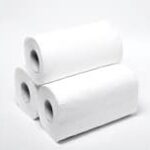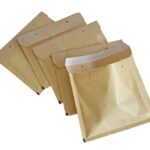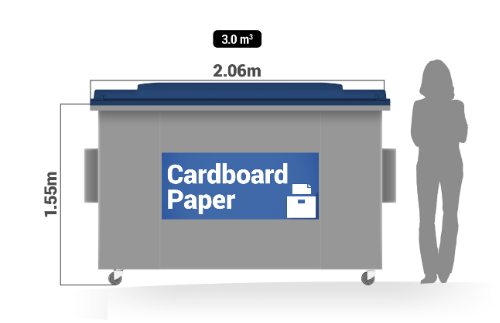Is Twine Recyclable?♻️
Energy Disrupter
Is Twine Recyclable?♻️: You always see them on farms; herds of cattle, horses, and sheep eat them daily. And, as a kid, I remember seeing them in an episode of Tom and Jerry. What I am talking about is hay. I’ve always wondered what those were when I was young. For me, they looked more like farm decorations than anything. But, by searching for what it is, I learned that it is food for farm animals.
To shape them like what we usually see on farms, they are bound using a baling twine or baler twine. And, it got me thinking; Can you recycle baling twine? And, how do you recycle them? Read on to learn more.
>Download Now: Free PDF Business Owners Guide To Commingled Recycling Bin Services
A bit about Waster
Before I discuss bailing twine being recyclable, let me share with you more information about Waster.
We here at Waster provide you with innovative solutions for your and your business’s waste management and recycling needs. Furthermore, we provide flexible, 30-day contracts instead of the typical lock-in contracts, which proves to be better.
Click on the blue button to learn more.
READ: COVID-19 Plastic Waste 🌏
Recyclable twine
Let me first define what baling twine is and what it does. A baling twine is a strong thread made from either the fibre of a sisal plant or synthetic twine. It binds fibrous materials like hay or straw into a stacked form.
And, to answer the question: yes, baling twine is indeed recyclable. I found this good news because farmers extensively use baling twine and silage wrap, so to hear that recycling facilities accept them gave me a huge sigh of relief. There are plenty of recycling facilities that accept bale twine.
But, before you do so, hold your horses (Get it? Because horses eat hay? No? Okay…), first. As also applied to other recyclables, you have to consult with your local council first before setting them up before location. Additionally, you have to make sure to collect them in bulk. And, it should not have any debris. Follow all of these, and your hay baling twine will surely be recycled.
With all of these being said, you have to make sure you let your recyclable baling twine be collected. I would not want to see long metres of polypropylene baling twine slowly decomposing on the ground. It takes 50 years for this plastic twine to break down! But, sadly, recycling rates for baling twines are low.
They usually end up in a landfill. Furthermore, other farmers resort to burning or burying (creating their version of a landfill)them. Burning twine – especially the plastic ones – emits toxins that harm the environment in all sorts of ways. So, it is best to recycle or reuse them.
The recycling process
If your local recycling centres accept baling twine, they tend to collect them bundled and in bulk, as I have previously stated. After that, they process it in their facility and re-bail them. The recycling centre does not recycle them as individual plastic, but instead as “mixed plastic”.
Natural baling
It is only natural to prefer using natural over synthetic, but recyclable baling twine materials. Just the other day, I read a blog on Listen To Your Horse on recycling hay bale twine, so it is safe to assume that this is where I got the inspiration to write this blog. And, what the author said in one statement made an impact on me. Here are the following words:
I get it, but I personally would pay more to have my hay baled with sisal, or hemp, or bamboo – surely there are stronger materials we can use if market demand is there? Sure, recycling is better than dumping in a landfill, but to really solve the problem, we should use natural (biodegradable) hay bale twine!
I could not agree more with this statement! Although synthetic baling twine is recyclable, it is still better to use the natural ones because you do not have to exert more effort just to get rid of it, unlike the plastic ones wherein it will exhaust time, effort, and resources.
You only have to biodegrade natural baling twine, which decomposes fast because of its composition.
Reusing recyclable twine
Along with recycling, you can also reuse baling twine. This option is available for places that have limited means to recycle them. Places like Tasmania wherein recycling options are limited can and should apply this. Here, I will state some options you can do (derived from Asia Dragon):
- Reuse – As the title of the sections suggests, you can use them again to bind hay or straw if they are still in good condition. Always remember to buy high-quality baling twine so that you can reuse them without a hitch.
- Give them away – if you have no more purpose for them, you can give them away to someone who needs baling twines; one farmer might need them, so give them to them for free to hit two birds with one stone! Or, if you do not have anyone who needs them, just leave them at your front farm or house gate for others to see. One might be interested and take them off from your hands.
- Get artsy! – You can get down to business and repurpose your baling twines by yourself! Clean them up and dry them before anything else. After doing that, there are a plethora of ideas you can do with them. You can turn them into recycled baskets, doormats, and others.
[embedded content]
[embedded content]
Is twine recyclable? conclusion
Twine is indeed recyclable. For you to get them collected and recycled, you must first contact your local council. If unavailable for recycling, then you can repurpose them yourself, instead. Additionally, if you are willing to spend a little more, you can buy high-quality or natural baling twine to become more sustainable.
Waster: things you need to know
If you’re looking for recycling bins, check our waste recycling shop and find the best deals in terms of pricing and services.
Also, please call 1300 WASTER (1300 927 837), or email us at [email protected] if you have any further questions.
















